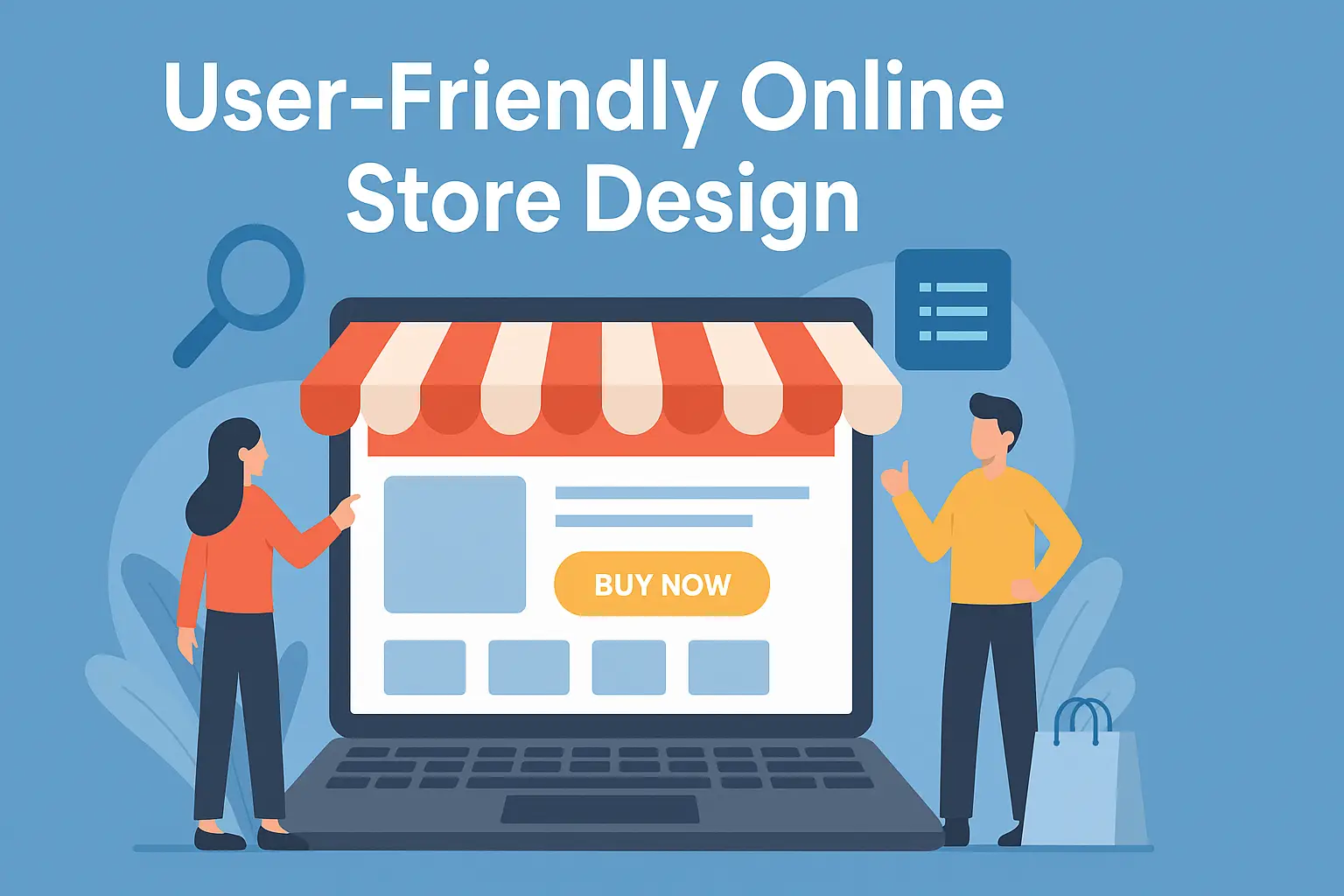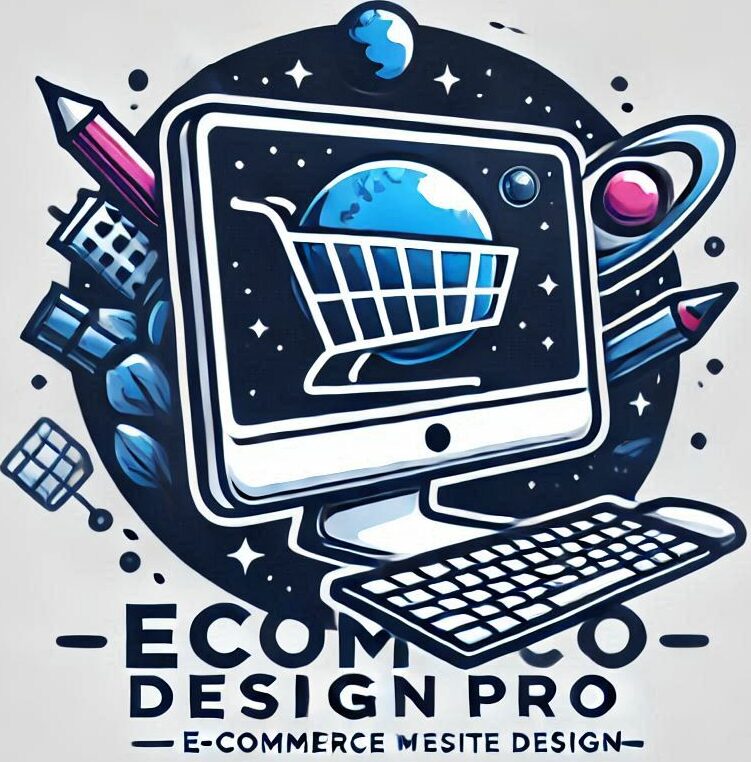
I. Introduction to User-Friendly Online Store Design
User-Friendly Online Store Design is at the core of modern e-commerce, shaping how customers interact with and trust your brand.” As e-commerce continues to flourish, businesses face the challenge of not just attracting visitors but also converting them into loyal customers. Investing in User-Friendly Online Store Design with Shopify for exemple serves as the foundation for this conversion, ensuring that the shopping experience is seamless, enjoyable, and efficient.
User-friendly design transcends aesthetics; it encompasses functionality and user experience (UX). A store that prioritizes usability can significantly influence consumer behavior, reducing bounce rates and increasing sales. In today’s competitive market, where customers have countless options at their fingertips, a positive first impression is crucial. If visitors find a website difficult to navigate or frustrating to use, they are likely to abandon their carts and seek alternatives.
This article explores best practices for designing an online store that prioritizes user-friendliness. By understanding the core principles of user-centered design, optimizing essential design elements, and streamlining the checkout process, retailers can create a shopping environment that fosters trust and satisfaction. Ultimately, a user-friendly online store enhances the customer experience and drives business success, making it an essential focus for any e-commerce venture. Without User-Friendly Online Store Design, even great products risk being overlooked.
II.Why User-Friendly Online Store Design is Essential for Customer Experience
User experience (UX) is a critical component of designing a successful online store. It encompasses every aspect of a user’s interaction with a website, from the initial visit to the final purchase. A positive UX fosters customer satisfaction, drives higher conversion rates, and encourages repeat business. To create an online store that resonates with users, it’s essential to focus on user-centered design principles, conduct thorough user research, and develop user personas.
A. Importance of User-Centered Design
User-centered design (UCD) places the needs, preferences, and behaviors of users at the forefront of the design process. This approach ensures that the online store is tailored to provide the best possible experience for customers. By prioritizing the user, designers can create intuitive interfaces, streamline navigation, and develop features that resonate with the target audience. A user-centered design not only enhances usability but also builds trust and loyalty, as customers feel valued and understood.
B. Conducting User Research and Testing
To effectively implement user-centered design, conducting user research is essential. This involves gathering insights about your target audience through various methods, such as surveys, interviews, and usability testing. By understanding users’ pain points, preferences, and behaviors, designers can make informed decisions that enhance the overall shopping experience. Once the design is in place, usability testing allows designers to observe real users interacting with the site. This feedback is invaluable as it highlights potential issues and areas for improvement, ensuring that the final product aligns with user expectations.
C. Creating User Personas
User personas are fictional representations of your ideal customers, based on real data and research. They help designers and stakeholders visualize the target audience and their specific needs, goals, and behaviors. By developing detailed user personas, teams can maintain focus on the end user throughout the design process. These personas guide decision-making, from layout choices to feature prioritization, ensuring that the online store is designed with real users in mind. Ultimately, user personas serve as a powerful tool in creating a more engaging and effective shopping experience that meets the diverse needs of your customer base.
In summary, understanding user experience is fundamental to designing a user-friendly online store. By implementing user-centered design principles, conducting thorough research, and creating user personas, businesses can build an online shopping environment that not only attracts customers but also keeps them coming back for more.
III. Design Elements That Enhance Usability
Creating a user-friendly online store involves more than just aesthetics; it requires meticulous attention to design elements that improve usability. By focusing on intuitive design practices, you can significantly enhance the shopping experience for your customers. Below, we explore three critical design elements that contribute to a seamless user experience.
A. Intuitive Navigation Structures
Navigation is the backbone of any online store. A well-structured navigation system allows users to find products quickly and efficiently, reducing frustration and increasing the likelihood of conversion. To create an intuitive navigation structure, consider the following best practices:
- Clear Categories and Subcategories: Organize products into logical categories and subcategories that reflect how customers search for items. Use familiar terminology and avoid jargon to ensure users can easily understand where to find what they need.
- Search Functionality: Implement a prominent search bar that enables users to locate products by entering keywords. Enhance the search experience with features like autocomplete suggestions and filters to narrow down results.
- Breadcrumbs: Incorporate breadcrumb navigation to help users track their location within the website. This design element allows customers to backtrack easily and explore related categories without losing their place.
B. Responsive and Mobile-Friendly Design
With the increasing use of mobile devices for online shopping, ensuring your store is responsive and mobile-friendly is paramount. A responsive design adapts to various screen sizes and orientations, providing an optimal viewing experience across devices. Here are key considerations for achieving this:
- Fluid Grids and Flexible Images: Use fluid grid layouts that adjust to the screen size and ensure images scale appropriately. This prevents distortion and maintains visual appeal on mobile devices.
- Touch-Friendly Elements: Design buttons and interactive elements large enough for users to tap easily with their fingers. Ensure there is adequate spacing between clickable items to prevent accidental selections.
- Fast Loading Times: Optimize your website for speed, as mobile users are often on-the-go and expect quick loading times. Compress images, minimize scripts, and leverage browser caching to enhance performance.
C. Effective Use of Visual Hierarchy
Visual hierarchy is a design principle that guides users’ attention to the most important elements on a page. By strategically employing visual hierarchy, you can create a clear and engaging layout that facilitates decision-making. Here are some techniques to enhance visual hierarchy:
- Contrast and Color: Use contrasting colors to draw attention to key elements, such as call-to-action buttons or promotions. A cohesive color palette can also help unify the overall design while guiding users’ focus.
- Typography: Vary font sizes, weights, and styles to create a clear distinction between headings, subheadings, and body text. Effective typography improves readability and reinforces the importance of specific content.
- Whitespace: Incorporate ample whitespace to avoid clutter and help users focus on essential elements. Whitespace creates a sense of balance and allows for easier navigation by separating different sections of the page.
By prioritizing these design elements, you can create a more user-friendly online store that not only attracts visitors but also encourages them to engage with your products and complete their purchases. In the following section, we will delve into optimizing the checkout process, a critical component of enhancing the overall usability of your online store.
IV. Optimizing the Checkout Process
A seamless checkout is a non-negotiable in User-Friendly Online Store Design. An optimized checkout experience reduces cart abandonment rates and fosters customer satisfaction and loyalty. Below are key strategies for enhancing this critical stage of the online shopping journey.
A. Simplifying Forms and Reducing Steps
One of the primary reasons for cart abandonment is a lengthy and complicated checkout process. To combat this, it’s essential to simplify forms by minimizing the number of fields required for completion. Only ask for information that is absolutely necessary to complete the purchase, such as shipping address, payment details, and contact information.
Implementing features like auto-fill for returning customers can also streamline the process. Moreover, consider offering a guest checkout option, allowing users to make purchases without creating an account. This not only speeds up the transaction but also caters to users who may be hesitant to share their personal information upfront.
B. Offering Multiple Payment Options
Diverse payment options can significantly enhance the checkout experience. Customers have varying preferences regarding how they wish to pay, so providing multiple payment methods—such as credit cards, digital wallets (e.g., PayPal, Apple Pay, Google Pay), and even buy-now-pay-later services—can accommodate a broader audience.
Additionally, ensure that each payment option is easy to find and use within the checkout interface. Highlighting secure payment gateways and providing visual cues can reassure customers about the safety of their transactions, further encouraging them to complete their purchases.
C. Providing Clear Confirmation and Feedback
Once a purchase is made, it’s vital to provide customers with clear confirmation and feedback to foster trust and satisfaction. After the checkout process is completed, display a confirmation page summarizing the order details, including items purchased, shipping information, and estimated delivery dates. This not only validates the customer’s action but also reassures them that their order is being processed.
Follow up with a confirmation email that reiterates these details and includes contact information for customer support. This transparency is crucial in building a positive relationship with customers, as they feel valued and informed throughout the post-purchase phase.
By focusing on these aspects of the checkout process, online store owners can significantly enhance the overall user experience, leading to increased conversions and customer loyalty.
V. Conclusion: Key Takeaways for a User-Friendly Online Store
Designing a user-friendly online store is not merely about aesthetics; it is fundamentally about creating a seamless shopping experience that prioritizes the needs and preferences of the user. By implementing the best practices discussed throughout this article, you can significantly enhance your online store’s usability and foster customer loyalty.
First and foremost, understanding user experience (UX) is essential. Embracing user-centered design means actively involving your target audience in the design process through research and testing. This approach not only helps you identify pain points but also allows you to craft solutions tailored to your customers’ needs. Developing user personas can further clarify your audience’s motivations and behaviors, guiding your design decisions.
The design elements you choose play a pivotal role in enhancing usability. Intuitive navigation structures ensure that users can easily find what they’re looking for, while a responsive, mobile-friendly design accommodates shoppers on various devices. Additionally, effective use of visual hierarchy can guide users through the shopping journey, making it easier for them to make informed decisions.
An optimized checkout process is another critical component of user-friendly design. By simplifying forms and reducing the number of steps required to complete a purchase, you can minimize cart abandonment. Providing multiple payment options caters to diverse preferences, while clear confirmation and feedback throughout the process reassure customers that their transactions are secure and successful.
In summary, the key to a successful online store lies in prioritizing user experience through thoughtful design and continuous improvement. By focusing on understanding your users, enhancing usability through smart design choices, and streamlining the checkout process, you can create an online shopping environment that not only attracts customers but also encourages repeat visits and long-term loyalty. Adopting these best practices will ultimately set your online store on a path toward sustained success in a competitive digital marketplace.
FAQs(Frequently Asked Questions)
Q1: What is User-Friendly Online Store Design?
A: It’s the practice of creating an e-commerce site that is intuitive, easy to navigate, mobile-responsive, and optimized for customer satisfaction.
Q2: Why does User-Friendly Online Store Design matter for conversions?
A: A clear layout and smooth navigation reduce friction, keep visitors engaged, and increase the likelihood of purchases.
Q3: How does User-Friendly Online Store Design affect trust?
A: Simple checkouts, visible security measures, and consistent branding create confidence and reliability in your store.
Q4: What are the key elements of User-Friendly Online Store Design?
Q5: Can small businesses benefit from User-Friendly Online Store Design?
A: Absolutely. Even startups can see higher engagement and customer loyalty by focusing on user-friendly design principles.


